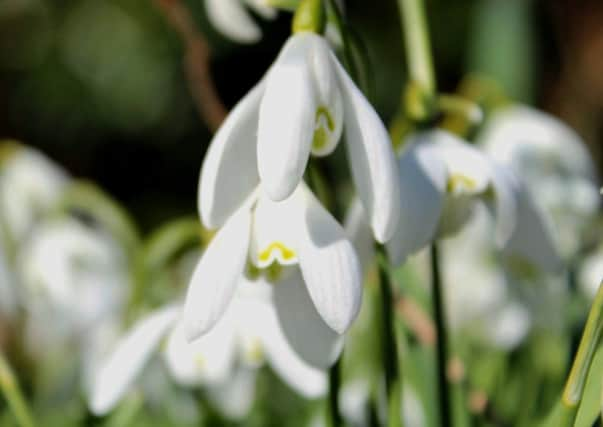A friend dropping in


This year, that date is today, January 31, and for the next five weeks or so, several acres of woodland and gardens in the grounds of the 19th-century country house estate, near Blyth, will be a carpet of white as millions of snowdrops announce that, hopefully, the worst of winter is over and things can only get better.
I can think of worse ways of spending a fiver.
If winter does have some unpleasant plans up its sleeve, then we have to make the most of what we’ve got – and what we’ve got is the humble snowdrop, which paves the way for the more colourful and larger spring bulbs like daffodils and tulips.
Advertisement
Hide AdAdvertisement
Hide AdBut unlike its bigger spring brethren, it is usually forgotten as soon as its flowering days are over. Whereas tall flowers leave behind the problem of tatty foliage, the snowdrop (Galanthus) becomes inconspicuous after the last flower fades, and is so often tucked away in corners and beneath shrubs and trees, that it becomes an instant, distant memory.
The thoughtful gardener will, however, never forget anything which can put on a brave face when winter is doing her worst. And in a few weeks, that same thoughtful gardener may well be preparing to plant even more snowdrops.
Strange though it may seem, clumps of Galanthus bulbs, lifted and planted immediately after they have finished flowering, will fare far better than the wrinkled, dry bulbs which are offered for sale in autumn.
Those sad apologies for a splendid spring flower take time to acclimatise, whereas bulbs planted in March – “in the green”, which is a way of saying they have finished blooming but are still heavy with foliage – will carry on as though nothing has disturbed their world.
Advertisement
Hide AdAdvertisement
Hide AdFor that reason, many gardeners watch until the final flower has bloomed, then they dash out, lift and divide clumps, and replant them.
Snowdrops like shady spots; under trees, in grass, but they are capable of growing and thriving just about anywhere as long as the soil is fertile and free-draining. After flowering they should be left alone until the leaves have yellowed.
Hodsock Priory, Hodsock, Worksop, Nottinghamshire, S81 0TY. 01909 591274. www.hodsockpriory.com